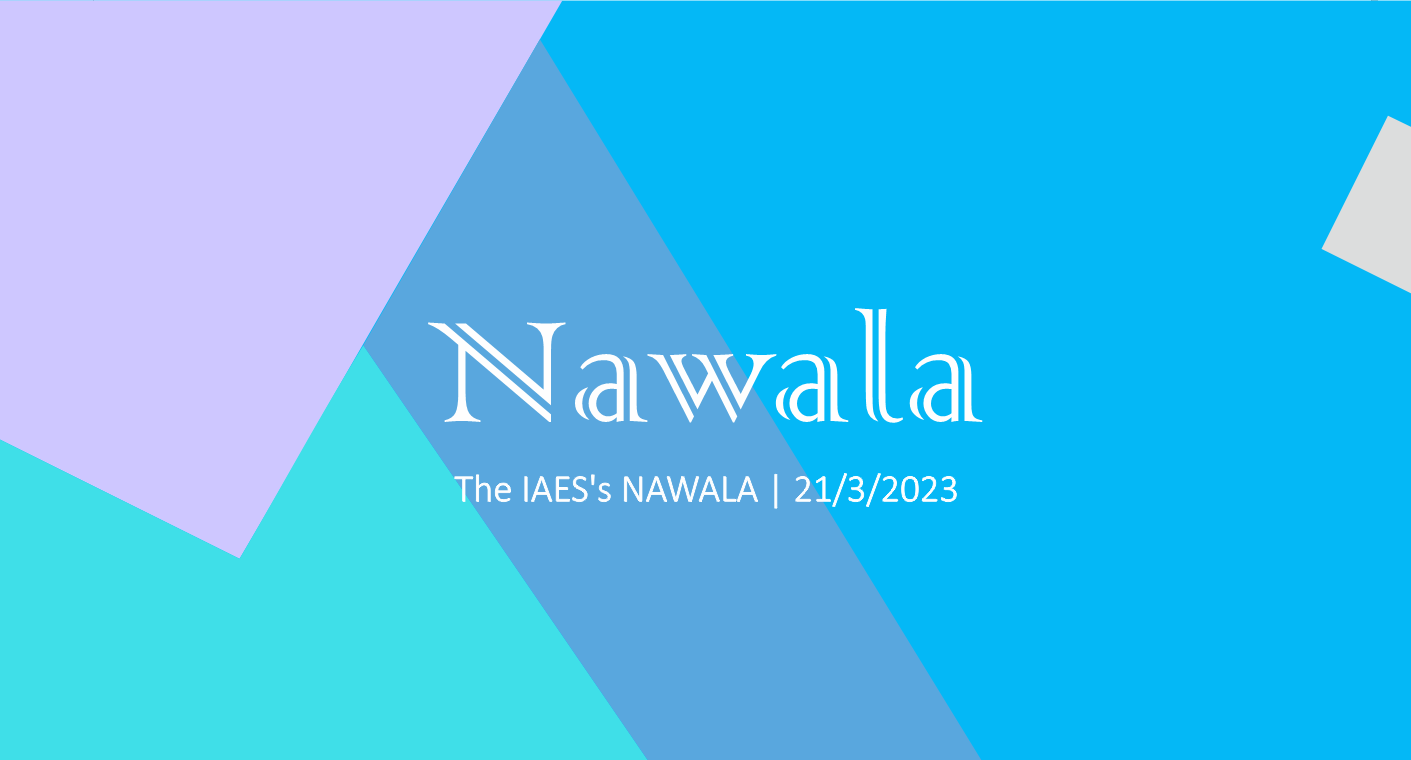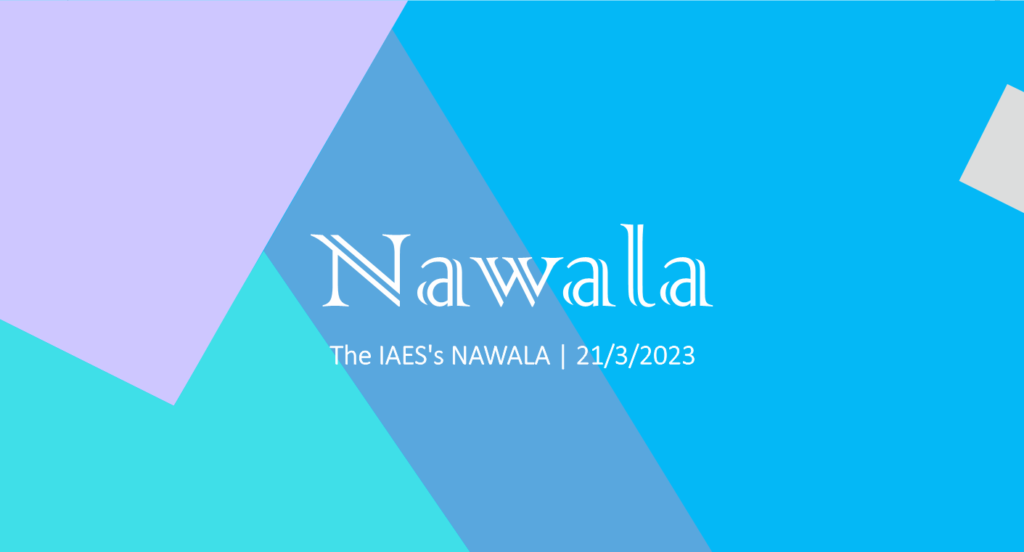Recently, there have been many issues related to academic misconduct,...
Read More


Greetings, colleagues Nawala! Hope you are always in good health.
This is the IAES Newsletter of the Institute of Advanced Engineering and Science. Today we want to share the latest issues regarding the world of public health.
The profile of heart diseases in the Philippines conforms to a global pattern, with ischaemic heart diseases being the leading cause of death among all types. Health inequalities in terms of gender, age group, and region also exist in the country, with males, the elderly, and the highly urbanized areas most vulnerable. It is enticing to assume that this gap in health outcomes is inevitable and has yet to be effectively addressed due to factors beyond public management and control because heart diseases are lifestyle related. The complexity and interrelation of determinants and the demographic differences of risk profiles suggest that preventive initiatives will only be effective if they are adapted to the specific needs for which they will be implemented. A more complete discussion can be seen in the following article:
Heart diseases remain one of the major health concerns worldwide, inflicting a tremendous financial burden, especially in low to middle-income countries like the Philippines. An exhaustive time-trend analysis, including recent data, is essential to measure the nation’s progress in cardiac health, capturing the effect of national-scale changes over time. Thus, using stored data from the Philippine health statistics, this study analyzed trends and profiles of heart disease mortality in the Philippines from 1960 to 2019 and discussed relevant national policies for greater recognition and awareness. Ischaemic heart disease constituted the most significant proportion of mortality among all types. Steadily increasing trends by cause, gender, age group were observed, and with males and the elderly population having higher rates. Regional differences also existed, having the highest rates in Luzon, the Visayas, and Mindanao respectively. Like global patterns, heart disease remained one of the country’s leading causes of mortality over decades. Differences between genderes, age groups, and regions are attributed to complex and interrelated factors making males, the elderly, and highly urbanized areas most vulnerable among the population.
Heart disease mortality in the Philippines from 1960 to 2019: a big data analysis
Kathleen Laum Cabanlit, Ralf Benjo Goder Morilla, Angel Mae Frias Luga, Jamerah Baniaga Sidic, Chin-chin Jimenea Demayo, Cesar Guinanao Demayo
COVID-19 has provided an unprecedented opportunity to expand access and coverage to the country’s healthcare system via telehealth. It significantly improves access to health care while maintaining the quality of care. Patient care delivered remotely can reduce time engagement, physical exposure, and the cost of travel for both patients and service providers. A more complete explanation is contained in the following article:
COVID-19 has provided an unprecedented opportunity to expand access and coverage to the country’s healthcare system via telehealth. Because of the growing need for telemedicine by healthcare providers, the Medical Council of India issued Practice Guidelines in March 2020. Medical specialties like ophthalmology, dermatology, and neurology offered telehealth services during pandemics. Low-middle-income countries like India are highly dependent on out-of-pocket expenses for health services. Thus, there is a need to understand telehealth’s accessibility, feasibility and affordability. This review aims to understand trends regarding the access and patient response to telehealth in India during the COVID-19 pandemic. We reviewed published papers to understand better accessibility and patient response to the healthcare delivery systems via telehealth in India. The results of this review showed that patients were satisfied with the use of telehealth. Healthcare providers and patients believe telehealth can be suitable for various healthcare services, including follow-up visits in clinical disciplines and minor health problems. In conclusion, for Telehealth to understand further, quality evidence must be available, and its role in developing integrated parts of the healthcare system to be defined.
Use of telehealth during COVID-19 pandemic in India: literature review
Alaka Chandak, Mrudula Holkar, Abhishek Moghe, Ketaki Washikar
Senior citizens are more likely to get sick from COVID-19 compared to other age groups. It is important to understand the current knowledge and practices of preventive measures among older adults, and barriers to communicating health and behavioral information targeting them during uncertain situations like the ongoing COVID-19 pandemic. For senior citizens, the message and content need to be context-specific and understandable, especially using more convenient terminology for better understanding for all levels of people. More details in the following article:
The coronavirus disease-2019 (COVID-19) pandemic has affected human being in multiple ways all over the world. Senior citizens are more likely to get sick from COVID-19 compared to other age groups. Little is known about ways to deliver the messages to adult people to get the best outcome. We conducted a direct telephone/mobile phone-based cross-sectional survey among individuals who were aged >60 years old in Bangladesh. Verbal consent was taken and the snowball sampling method was used to reach the participants. This study showed that the most common sources of information about COVID-19 were family members, relatives, friends, and electronic media. Hence, 36.8% participants perceived that the media massages about COVID-19 were difficult to understand. Meanwhile, 53% participants could not understand the meanings news and information as those were presented using unknown terminologies. From the findings it can be concluded that the media messages should be communicated in a way that are context-specific and understandable, especially using more convenient terminology for better understanding for all levels of people.
Communicating health and risk information among senior citizens in Bangladesh
Mohammad Aminul Islam, Monaemul Islam Sizear, Sharmin Akhtar, Monimul Huq
Precision medicine helps reduce trial-and-error prescribing and minimize adverse drug reactions while improving the drug’s effectiveness. Precision medicine considers biological factors such as genetics, coexisting medical conditions, habits, and the environment of each patient in determining the appropriate treatment. Many challenges remain to be overcome to develop precision medicine. Good regulations for patient data ownership and clinical data-sharing, followed by sufficient data infrastructure and human resource capabilities, are the most critical factors in ensuring success in precision medicine. A full explanation can be seen in the following article:
Recently, precision medicine has gained much attention. Precision medicine helps reduce trial-and-error prescribing and minimize adverse drug reactions while improving the drug’s effectiveness. Precision medicine is a medical method that seeks to maximize healthcare quality by tailoring the healthcare process to each patient’s unique characteristics. In the era of rapid technological growth and data explosion, precision medicine’s development has become very promising. Development of techniques for obtaining medical data; significant reductions in the cost of bio sequencing; massive development of computing tools, storage systems, and wireless communication systems; as well as the development of data analysis techniques based on artificial intelligence have all become significant driving forces in the advancement of precision medicine. In this manuscript, we summarized previous studies on precision medicine development. In addition, we discussed the opportunities and potential challenges of precision medicine development, particularly in Indonesia. Despite its promising potential, many challenges remain to be overcome to develop precision medicine. Good regulations for patient data ownership and clinical data-sharing, followed by sufficient data infrastructure and human resource capabilities, are the most critical factors in ensuring success in precision medicine. Moreover, guaranteeing data safety, patient privacy, and genome fairness are other issues that must be addressed.
Recommendation of precision medicine application in Indonesia from multiple perspective: a review
Urfa Khairatun Hisan, Muhammad Miftahul Amri
With the surge of the COVID-19 pandemic, orthodontists have recommended the use of mouthwashes. However, this product frequently contains ingredients that can modify the mouth’s pH and elastic force. The force loss of orthodontic latex elastics increased with prolonged immersion in liquid. Mouthwashes did not affect the force degradation of orthodontic latex elastics. The lowest force degradation was generated by povidone–iodine, followed by zinc sulfate, sodium fluoride, and chlorhexidine. More details in the following article:
With the surge of COVID-19 pandemic, orthodontists have recommended the use of mouthwashes. However, this product frequently contains ingredients that can modify the mouth’s pH and elastic force. This study examined the influence of mouthwashes on latex elastic force deterioration. One hundred orthodontic latex elastics (1/4”) were separated into five groups: control, zinc sulfate 0.2%, chlorhexidine 0.2%, sodium fluoride 0.2%, and povidone–iodine 1%. The samples were stretched to 19.05 mm, stored in artificial saliva solutions, and incubated. Groups 2–5 tested mouthwashes for 60 seconds every 12 hours and then reverted to artificial saliva. Force was measured using a five-times-activated tension gauge. Elastic force was tested at five-time intervals: baseline, 1, 6, 12 and 24 hours. The statistical analysis included two-way ANOVA and the Tukey post–hoc test. Results showed statistical differences for the time intervals and force degradation of orthodontic latex elastics (p<0.05). The majority of force loss occurred within six hours of extension and immersion. Mouthwashes had no influence on the reduction in elastic force (p>0.05). The force degradation of orthodontic latex elastics was unaffected by mouthwashes. The lowest force degradation was generated by povidone–iodine, followed by zinc sulfate, sodium fluoride, and chlorhexidine.
Does mouthwash degrade the force of orthodontic latex elastics?
Sri Suparwitri, Niswati Fathmah Rosyida, Ananto Ali Alhasyimi
The five points above are the current issues in the world of public health. Information on public health developments can be accessed for FREE at https://ijphs.iaescore.com/.
By: Zly Wahyuni
Recently, there have been many issues related to academic misconduct,...
Read MorePrihardanu et al. (2021) analyzed survey data related to indoor...
Read MoreBigBear.ai is a company at the forefront of leveraging artificial...
Read More